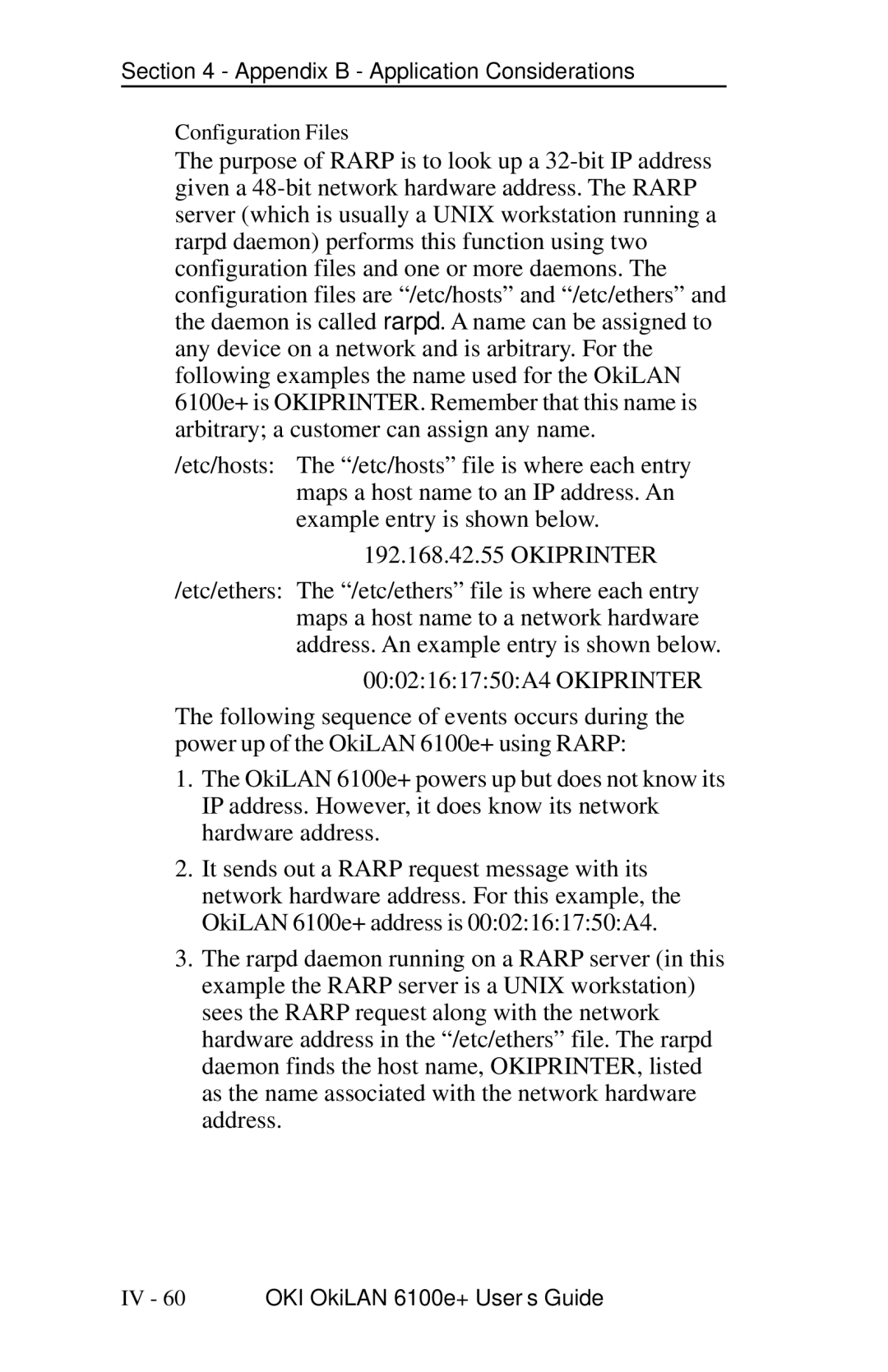Section 4 - Appendix B - Application Considerations
Configuration Files
The purpose of RARP is to look up a
/etc/hosts: The “/etc/hosts” file is where each entry maps a host name to an IP address. An example entry is shown below.
192.168.42.55 OKIPRINTER
/etc/ethers: The “/etc/ethers” file is where each entry maps a host name to a network hardware address. An example entry is shown below.
00:02:16:17:50:A4 OKIPRINTER
The following sequence of events occurs during the power up of the OkiLAN 6100e+ using RARP:
1.The OkiLAN 6100e+ powers up but does not know its IP address. However, it does know its network hardware address.
2.It sends out a RARP request message with its network hardware address. For this example, the OkiLAN 6100e+ address is 00:02:16:17:50:A4.
3.The rarpd daemon running on a RARP server (in this example the RARP server is a UNIX workstation) sees the RARP request along with the network hardware address in the “/etc/ethers” file. The rarpd daemon finds the host name, OKIPRINTER, listed as the name associated with the network hardware address.
IV - 60 | OKI OkiLAN 6100e+ User’s Guide |
